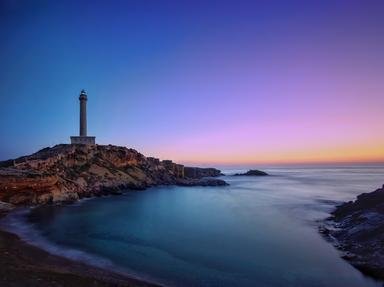Quiz Answer Key and Fun Facts
1. She sailed from Nantucket under Captain Ahab, first mate Starbuck. Ahab was obsessed with hunting a great white sperm whale which had taken his leg in a previous encounter. His obsession was to cost him his ship, his life, and the lives of all but one of his crew. What was the ship's name?
2. Captain McWhirr was her master, steaming with a "cargo" of 200 Chinese coolies to repatriate them to their home port of Fu-Chau after they had laboured abroad for seven years for the Bun Hin Company. In the Formosa Channel, she was beset by a tropical storm which almost sank her. What was the ship's name in this most famous of storm stories?
3. Designed by Isambard Kingdom Brunel, she was the largest vessel afloat when she was launched in 1843 and was the first ocean-going iron-hulled vessel with a screw propeller. What is her name?
4. Harvey Cheyne was the 15-year-old, thoroughly spoiled and self-indulgent son of a mining and timber magnate. When he fell overboard from the liner taking him to Europe to finish his education, he was rescued by a Grand Banks fishing schooner. Disbelieving his boasts and unimpressed by his threats, the schooner's owner and skipper knocked some sense into Harvey: after three months of hard, dangerous work on the Banks, Harvey was a reformed character. What was the name of the schooner?
5. This tough little ship was originally built as a Whitby collier, the Earl Of Pembroke, but was purchased by the Royal Navy in 1768 and refitted as a scientific survey ship. Many senior Navy officers questioned the Admiralty's choice of captain for her, one James Cook, a completely unknown Lieutenant. By what name was the little collier known when she sailed for the Pacific on 26 August 1768 under the White Ensign of the Royal Navy?
6. In December 1986, Captain First Rank Marko Ramius and his crew embarked on the maiden voyage of the latest Soviet nuclear missile submarine. Ramius contravened his orders and sailed for the Eastern seaboard of the US. Using the submarine's ultra-stealthy capabilities, she simply disappeared, bringing the two most powerful navies in history into confrontation in the Atlantic. What was the name of the submarine?
7. In 1787, a Royal Navy ship under Lieutenant William Bligh, was commissioned to sail to Tahiti and to take on board a cargo of breadfruit plants. These were to be shipped to the West Indies and cultivated to provide cheap and nourishing food for slaves. After she sailed from Tahiti, the crew became disaffected by the captain's harsh discipline, and mutinied. What was the name of the ship?
8. She was originally built in 1922 as a 14,000-ton passenger liner. At the outbreak of WWII, she was converted to an Armed Merchant Cruiser for convoy escort duties by having elderly 6" guns and an outdated fire-control system fitted. Crewed by 254 seaman and officers under Captain Fogarty Fegen, she engaged the heavily-armed German pocket-battleship, Admiral Scheer, and was sunk within 25 minutes. What was the name of the ship?
9. In 1941, a merchant ship, the SS Politician, was wrecked on the south-east tip of the Isle of Eriskay in the Outer Hebrides, off the west coast of Scotland. To the huge delight of the locals, she was found to be carrying a cargo of 50,000 cases of Scotch whisky, which they at once began to "rescue" and stash around the island, to the fury of the local customs officer. In 1949, a film comedy was made of the incident. What was its name?
10. The Atlantic convoys were Britain's lifeline during the dark days of WWII, bringing much needed war supplies and food from Canada and the US. Single merchant ships were very vulnerable to attack, so the ships travelled in convoy. A number of Royal Navy ships were attached to each convoy for protection, mainly from U-Boats.
In the course of its convoy protection duty, Lieutenant-Commander Ericson, the captain of this fictional little "Flower"-class corvette, was confronted with the appalling decision of whether or not to release his depth-charges to attack a German U-boat, knowing that the water was full of struggling British survivors from a torpedoed merchant ship. What was the name of Ericson's ship?
Source: Author
frankmcvey
This quiz was reviewed by FunTrivia editor
bloomsby before going online.
Any errors found in FunTrivia content are routinely corrected through our feedback system.

